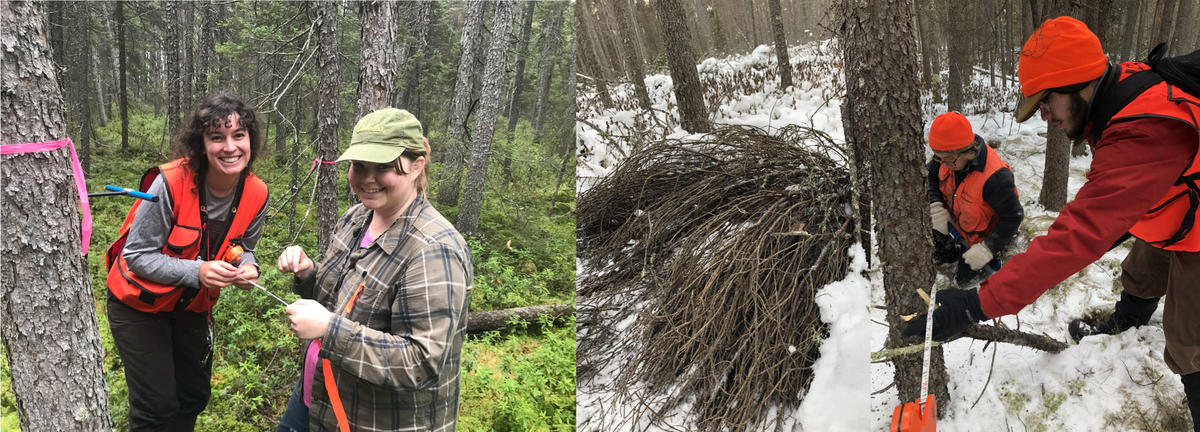
Background
Lodgepole pine dwarf mistletoe (Arceuthobium americanum) is a parasitic plant native to the western United States and Canada. This type of mistletoe can attack and kill jack pine, making it a threat to Minnesota’s forests should it reach the state. Early detection and eradication efforts are important to preventing an invasion.
Researchers studied the management toolbox of Minnesota’s similar native dwarf mistletoe variety, eastern spruce dwarf mistletoe, A. pusillum. As part of this project, they continued to examine the success rate of those current methods to eradicate and look ahead to developing new techniques for early sampling and identification of invasive mistletoe varieties.
Research questions
- What are the most effective and efficient techniques for sampling and identifying invasive dwarf mistletoe, A. americanum?
- How effective are eradication practices for Minnesota’s native dwarf mistletoe, A. pusillum?
- What is Minnesota’s plan for detecting and managing invasive dwarf mistletoe as early as possible?
Outcomes
The project team identified key aspects which need to be considered for the early detection of the invasive A. americanum on jack pine. They explored different methods for predicting A. americanum at the individual tree level and at the stand level using multiple different datasets. At the landscape level, researchers identified areas that have greater potential for impact from A. americanum and linked those with stand and environmental variables, which can provide foresters tools to prioritize management.
Through focus groups and surveys, researchers also identified the need for providing educational opportunities for foresters and loggers regarding the biology and identification of A. americanum. Training is a key component for successful early detection.
Publications
- Landscape-level likelihood estimation of eastern spruce dwarf mistletoe (Arceuthobium pusillum) infestations in lowland black spruce (Picea mariana) forests of Minnesota, USA (Canadian Journal of Forest Research, 2023)
- Stand Inventories as an Early Detection System for Forest Health Threats (Forest Science, 2023)
- The Difficulty of Predicting Eastern Spruce Dwarf Mistletoe in Lowland Black Spruce: Model Benchmarking in Northern Minnesota, USA (Forests, 2021)
- Results of a Qualitative Assessment of Northern Minnesota Loggers’ and Foresters’ Perspectives and Experiences with Dwarf Mistletoe in Black Spruce Stands (Department of Forest Resources Staff Paper Series, 2021)
- Results of a Survey of Minnesota Foresters Regarding Knowledge of and Treatment Practices for Dwarf Mistletoe in Black Spruce Stands in Northern Minnesota (Department of Forest Resources Staff Paper Series, 2021)
- Influence of eastern spruce dwarf mistletoe on stand structure and composition in northern Minnesota (Forest Ecology and Management, 2021)
Outreach
- Lake States Lowland, Wet, and Floodplain Forests symposium